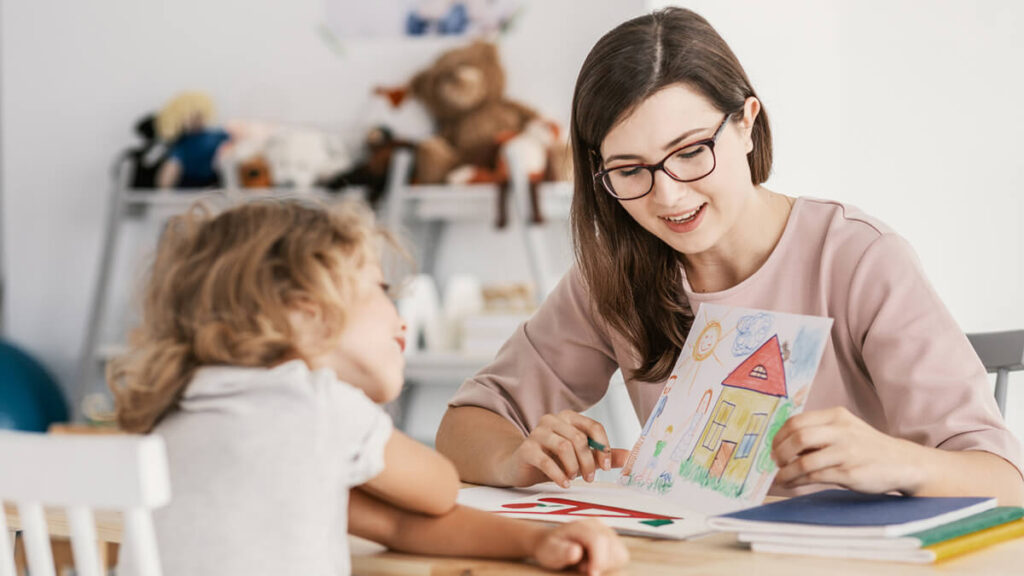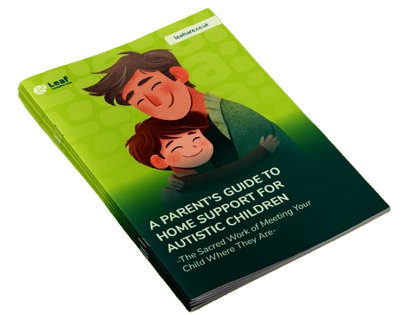What is a Visual Processing Disorder?
A neurological condition, Visual Processing Disorder, affects the way the brain processes visual information. Unlike visual acuity problems such as nearsightedness or farsightedness, this disorder cannot be identified through conventional eye charts. Despite having perfect 20/20 vision, people with VPD may still experience considerable difficulty in recognising objects, symbols, or shapes.
Visual processing disorders are frequently misunderstood and often mistaken for learning difficulties or disabilities. To understand the condition better, it’s important to consider it from two angles: visual acquisition skills and visual processing. Visual acquisition skills pertain to how our eyes and brain collaborate to gather information, process it, and help us make sense of what we see. On the other hand, the visual processing element involves assimilating and interpreting the data, enabling us to comprehend the visual stimuli.

There are three core visual acquisition skills:
- Eye-tracking – the ability to point to and track objects or words on a page, which is essential for reading and following a moving object
- Eye-teaming – the coordination of both eyes to look at a single object, which is vital for depth perception and eye-hand coordination
- Eye-focusing – linked to how effectively we can see things up close and make them clear, which is also crucial when reading, using a computer, or participating in similar activities
So, when people have challenges with these skills, they could have a visual processing disorder. However, these visual processing difficulties might manifest in various ways, and no two children or adults will face the same challenges. For example, some may have challenges assessing colour, size, and orientation. In contrast, others may have visual memory issues or difficulties with reading comprehension.
It’s crucial to understand that even though people with visual processing disorders find it challenging to understand visual information, this does not affect their intellectual abilities. At Leaf Complex Care, we take a humanised approach and strive to improve the quality of people with visual processing disorders.
Symptoms and Signs of Visual Processing Disorder
Some symptoms and signs of visual processing disorder can easily be mistaken for different learning difficulties or conditions, such as dyslexia or ADHD. However, visual processing disorders differ substantially and require distinctive treatments and support.
- Mixing up similar-looking words (b and p; m and w)
- Writing letters or numbers in reverse
- Having difficulties with reading comprehension
- Having difficulties following multi-step directions
- Having difficulties with telling time
- Finding it challenging to spell words
- Aversion towards any visual tasks
- Complaints of blurred vision during or after reading
- Having challenges with copying words
- Having challenges with remembering words, letters, or numbers
Aside from these characteristics, a few specific things children experience early on can indicate challenges with visual processing.
Visual Processing Disorder in Children

The visual processing disorder may indicate that a child is experiencing challenges with visual perception if they rely heavily on using their finger to follow along while reading. Furthermore, if children make a lot of head movements or become “wiggly” while reading”, it c,” n indicates that they need to work on their fine motor skills. This is important because these skills are necessary for using our eyes to track along pages.
It’s crucial to understand that visual processing disorder and its characteristics are difficult to explain when coming from a child. So, what can parents do to see whether a child is experiencing visual processing challenges? One activity is to have a child practice distinguishing between their right and left hands. These activities can be incorporated into everyday tasks such as putting on shoes, brushing teeth, or any leisure activities that include objects. Additionally, following a child’s progress whilchild’sng or drawing and trying to understand the most challenging aspect can help.
Here are some common signs of visual processing disorder in children:
Confusing Similar-Looking Letters and Words
Poor Reading Comprehension
Reversing Letters or Numbers
Difficulty Following Multi-Stepped Directions
Handwriting Issues
Easily Distracted During Visual Tasks
Complaints of Eye Irritation or Pain When Reading
Difficulty with Depth Perception and Spatial Relationships
Difficulty Recognising and Labeling Objects
Visual Processing Disorder in Adults
Visual processing disorders can have a significant impact on the lives of adults. Symptoms such as difficulty while reading, challenging spatial awareness, and challenges with depth perception can move towards adulthood, and people can live undiagnosed with any visual processing disorder.
However, this does not mean any visual processing disorder should go without treatment. Adults tend to experience stress, anxiety, and anger due to some symptoms.
Common Symptoms in Adults:
Reading and Writing Challenges
Spatial Awareness and Coordination Issues
Visual Discrimination Difficulties
Visual Memory Problems
Visual-Motor Integration Issues
Visual Sequencing and Closure Difficulties
At Leaf Complex Care, we believe everyone deserves the support and assistance that will make everyday life easier. Through the right therapies and accommodations, people with VPD can improve their visual processing skills and achieve better outcomes in both personal and professional settings.
Types of Visual Processing Disorders
There are eight types of visual processing disorders, each with its own symptoms. A person can experience more than one type of visual processing difficulty.
Visual Discrimination Issues
Visual discrimination recognises the similarities and differences between shapes, sizes, colours, patterns, and objects. An example of a person with challenges with this visual information is confusing signs such as ‘+’,’-‘, ‘&’, and other similar ones.
Other characteristics include:
- Visual Processing Issues with Letters and Numbers
- Challenges with Recognising Differences in Patterns and Objects
- Difficulty with Visual-Spatial Relationships
- Difficulty with Visual Memory
- Impact on Reading and Math Skills
- Trouble with Visual-Motor Integration
- Difficulty Identifying Objects in Complex Images
Visual Processing Therapy employs structured, evidence-based methods to enhance visual discrimination skills. By participating in activities that demand visual discrimination—such as sorting and matching games, hidden picture puzzles, and exercises to spot subtle differences—people can improve their ability to recognise and differentiate visual stimuli. Incorporating multi-sensory learning approaches, which engage visual, auditory, and tactile inputs, can further assist those with visual discrimination difficulties in comprehending and retaining information more effectively.
Visual Figure-Ground Discrimination Issues
Visual figure-ground discrimination is a critical aspect of visual perception and is one of the key components of figure-ground visual perception. People with visual figure-ground discrimination may have challenges with tasks that involve identifying and locating specific visual stimuli in complex or cluttered visual environments.
The main characteristics include:
- Challenges with concentrating on books or any written material
- Challenges with reading speed
- Challenges when asked to identify letters or details in words or images
- Challenges with scanning for information from written materials
Visual Sequencing Issues
People with visual sequencing issues may have challenges with tasks that involve organising visual information or visual details. This includes remembering and following directions or steps, distinguishing between visual patterns, or recognising and reproducing visual sequences.
The main characteristics include:
- Challenges with spelling words
- Challenges with remembering forms (shape, colour, orientation)
- Signs of whispers while writing
Visual-Motor Processing Issues
This visual motor processing disorder is present when people have challenges interpreting visual information, affecting their visual motor integration.
Common characteristics include:
- Challenges with hand-eye coordination
- Difficulty with staying within lines when writing or colouring
- Visible displeasure with sports
- Inconsistent handwriting, often difficult to read
Visual-Spatial Issues
Visual-spatial issues mainly affect visual motor skills and result in the inability to tell how far objects are from a person and one another. This can affect people when navigating through surroundings, interacting with objects, and engaging in activities requiring spatial perception.
Common characteristics include:
- Challenges with solving math problems by mixing up the order of numbers
- Challenges with navigating through crowded environments
- Continuous challenges with tying shoes
- Challenges with catching objects (during physical activities)
Visual Closure Issues
Visual closure is a skill that helps you identify objects even when they are partially visible.
Hence, this visual processing disorder might include the following:
- Challenges with finding or identifying an object that’s not fully visible
- Challenges with sounding out familiar words
- Challenges with puzzle activities
- Challenges with reading at a fast pace
Although this condition can be frustrating for the affected individuals, plenty of activities can help improve visual closure characteristics.
Letter And Symbol Reversal Issues
With this visual processing disorder, people have difficulty processing the correct shape of numbers or letters.
Characteristics of this processing disorder include:
- Writing in reverse (also referred to as mirror writing)
- Having challenges with remembering the shapes of the letters or numbers
It’s important to notIt’sat this visual processing difficulty is often mistaken for dyslexia. However, if someone writes in reverse, it does not mean they have dyslexia.
Long-or Short-term Visual Memory Issues
Visual memory is crucial for numerous academic tasks, including reading, spelling, mathematics, and copying information. This ability involves recalling the appearance of objects and can be divided into two types.

It can be categorised into two types:
Long-term visual memory refers to remembering something viewed some time ago, like recalling directions to a particular place.
Short-term visual memory involves remembering something recently seen, such as retaining key details from reading assignments or exams.
Issues with visual memory are frequently mistaken for other learning disabilities like dyslexia, ADHD, or dyspraxia because their symptoms can overlap. A thorough evaluation by specialists is essential to ensure an accurate diagnosis, as they can distinguish visual memory problems from other conditions.
How Does VPD Affect Learning in Children?
In some cases, children with visual processing disorders can be mistaken for having dyslexia, dysgraphia, dyspraxia or ADHD. This is because people with the condition might avoid certain physically challenging or overstimulating activities.
Children might appear inattentive in the classroom because they need to take breaks from the visual material, which might sometimes be overwhelming. As a result, people might seem as though they’re daydreaming they’re off into space. Unfortunately, teachers may be unaware of the visual processing issue and ask them to refocus, even though the child is simply taking a needed break.
So, it’s essential to recognise that children living with a visual processing disorder may need a different approach to learning and that their behaviour is often a coping mechanism rather than an attention issue. At Leaf Complex Care, we understand the challenges of visual processing issues and tailor our supportive care based on a person’s needs.
Can Children Outgrow Visual Processing Difficulties?
Research consistently shows that Visual Processing Disorders are lifelong conditions, and children do not naturally outgrow these difficulties without intervention. The brain’s method of processing visual information remains unchanged over time, so without specific treatment, these challenges continue into adulthood.
Children may not outgrow VPD, but they can develop compensatory strategies to manage their difficulties better. These strategies can enhance their ability to cope with challenges and improve their day-to-day functioning. For instance, some children may learn to follow verbal instructions rather than relying purely on visual cues.
Living with VPD
Adults with visual processing disorders may have additional challenges with their jobs, social lives, and personal relationships. Some may feel isolated or ashamed, believing they are the only ones facing these difficulties. Children with visual processing difficulties may face unique challenges in school, finding it hard to keep up with their peers and feeling frustrated with their lack of progress.
Despite these challenges, many resources are available to help children and adults with visual processing difficulties. Early intervention and support can be key in helping children overcome these challenges and learn how to function in school and beyond. For adults, seeking support groups or counselling services can provide a safe space to share experiences and learn coping strategies. With the right tools and support, people with visual processing difficulties can live fulfilling lives and achieve their personal and professional goals.
Visual processing difficulties are not a reflection of intelligence or ability, and anyone can achieve their full potential with the right support with the right support.
How Does Leaf Complex Care Support People With Visual Processing Difficulties?
At Leaf Complex Care, we believe in providing humanised support for people who require complex care to help them thrive. Our support workers work closely with the children, accompanying them to school or class and providing assistance and support throughout the day.
In addition to helping with homework and other school-related tasks, they take the time to identify each child’s strengths and help them build their confidence and self-esteem.
Focusing on their strengths, we help children and adults recognise their full potential and encourage them to pursue their interests and passions. Leaf provides a nurturing and empowering environment, supporting people to develop academically, socially, and emotionally.
For more information, contact us now.


